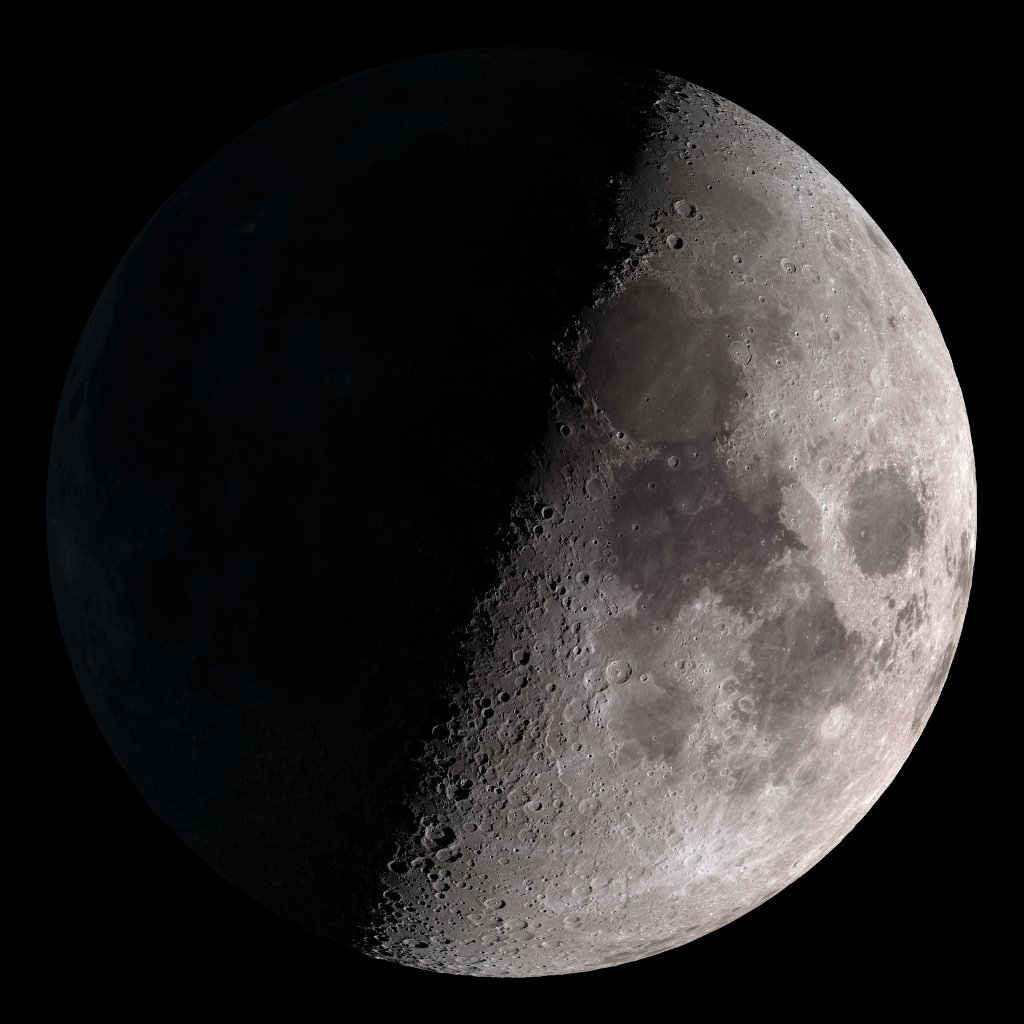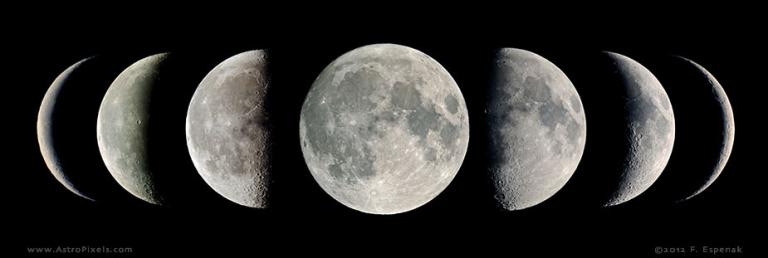

When does the young Moon first become visible in the evening sky? Eons from now, the same sides of Earth and Moon may forever face each other, as if dancing hand in hand, though the Sun may balloon into a red giant, destroying Earth and the Moon, before this happens. Likewise, Earth's gravity creates a detectable bulge - a 60-foot land tide - on the Moon.

We see the effect of the Moon in the ocean tides. Gravitational forces between Earth and the Moon drain the pair of their rotational energy. (Both are about 27.3 Earth days.) In other words, the Moon rotates enough each day to compensate for the angle it sweeps out in its orbit around Earth.

The Moon takes as much time to rotate once on its axis as it takes to complete one orbit of Earth. The Moon always shows us the same face because Earth's gravity has slowed down the Moon's rotational speed. Why do we always see the same side of the Moon from Earth? Most sources credit this unusual event, occurring only "once in a blue moon," as the true progenitor of the colorful phrase. While the exact origin of the phrase remains unclear, it does in fact refer to a rare blue coloring of the Moon caused by high-altitude dust particles. The term "blue Moon" has not always been used this way, however.
Moom phase last night full#
It can only happen on either side of February, whose 28-day span is short enough time span to have NO full Moons during the month. The timing has to be really precise to fit two Blue Moons into a single year. Blue Moons are rare because the Moon is full every 29 and a half days, so the timing has to be just right to squeeze two full Moons into a calendar month. On average, there's a Blue Moon about every 33 months. Over the past few decades, the second full Moon has come to be known as a "blue Moon." What is a Blue Moon and when is the next one?īecause the time between two full Moons doesn't quite equal a whole month, approximately every three years there are two full Moons in one calendar month.
October - Hunter's Moon (or Harvest Moon). September - Fruit Moon (or Harvest Moon). The most common names used in North America include: In fact, each full Moon of the year has its own name, most of which are associated with the weather or agriculture. Because the equinox always falls in late September, it is generally a full Moon in September which is given this name, although in some years the full Moon of early October earns the "harvest" designation. The full Moon that occurs closest to the autumnal equinox is commonly referred to as the "Harvest Moon," since its bright presence in the night sky allows farmers to work longer into the fall night, reaping the rewards of their spring and summer labors. Mark a spot on the basketball, which represents you as an observer on Earth, then play with various alignments of Earth and Moon in the light of your imaginary Sun. You can create a mockup of the relationship between Sun, Earth, and Moon using a bright lamp, a basketball, and a baseball. As the Sun sets, the Moon rises with the side that faces Earth fully exposed to sunlight (5). At full Moon, the Moon is behind Earth in space with respect to the Sun. At first quarter, the half-lit Moon is highest in the sky at sunset, then sets about six hours later (3). In other words, the Moon is between Earth and Sun. The Moon spends the extra 2.2 days "catching up" because Earth travels about 45 million miles around the Sun during the time the Moon completes one orbit around Earth.Īt the new Moon phase, the Moon is so close to the Sun in the sky that none of the side facing Earth is illuminated (position 1 in illustration). The Moon takes 27.3 days to orbit Earth, but the lunar phase cycle (from new Moon to new Moon) is 29.5 days. As the Sun sets, the Moon rises with the side that faces Earth fully exposed to sunlight (5).The Moon has phases because it orbits Earth, which causes the portion we see illuminated to change. At the new Moon phase, the Moon is so close to the Sun in the sky that none of the side facing Earth is illuminated (position 1 in illustration).







 0 kommentar(er)
0 kommentar(er)
